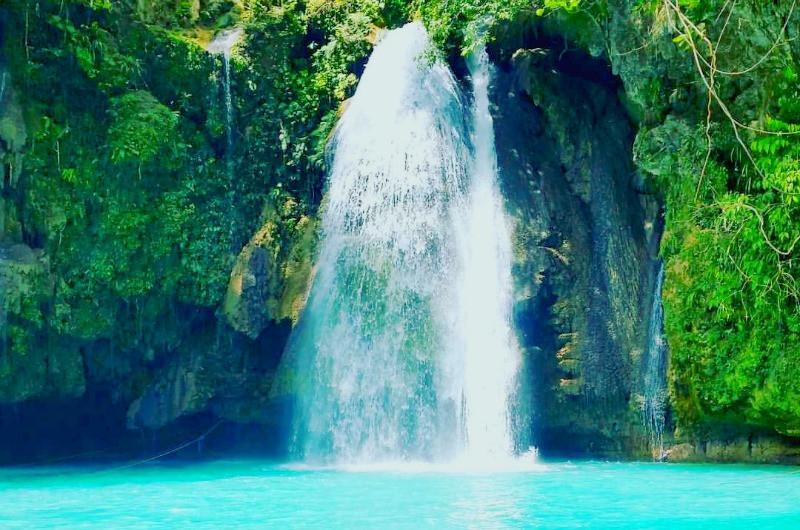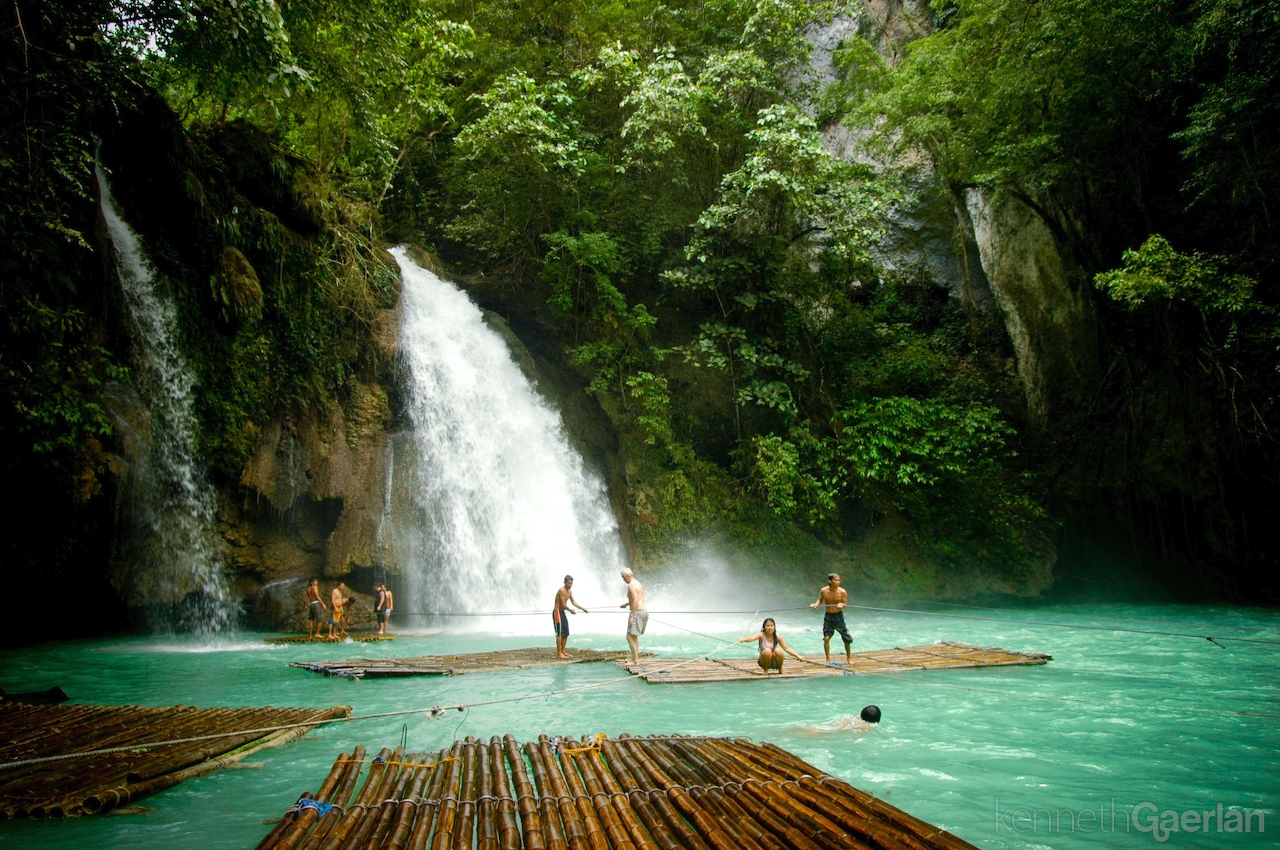
Cebu, a vibrant island province in the Philippines, is a destination that effortlessly blends ancient history with thrilling adventures and the quintessential tropical paradise experience. From the echoes of Magellan’s arrival to the azure depths teeming with marine life, Cebu offers a captivating journey for every traveler. This article delves into the heart of Cebu, exploring its rich past, its most alluring attractions, practical travel advice, and the sensory delights that await you.
A Glimpse into Cebu’s Storied Past
Cebu’s significance in Philippine history is undeniable. It was here, in 1521, that Portuguese explorer Ferdinand Magellan first landed, marking a pivotal moment in the archipelago’s encounter with the West. This event led to the Christianization of the Philippines, with Cebu becoming the cradle of Christianity in the country. The Magellan’s Cross, a wooden cross planted by Magellan himself, stands as a powerful testament to this historical epoch, a revered landmark drawing pilgrims and history enthusiasts alike.
Related Articles about Cebu: A Tapestry of History, Adventure, and Tropical Bliss:
- India: A Tapestry of Time, Taste, and Wonder – Your Comprehensive Travel Guide
- Hungary: A Tapestry of History, Culture, and Unforgettable Experiences
- Amsterdam: A Tapestry of Canals, Culture, and Charm
- Peru: A Tapestry of Ancient Wonders and Vibrant Culture
- Kuala Lumpur: A Symphony of Steel and Soul – Your Ultimate Guide to Malaysia’s Vibrant Capital
Beyond the colonial era, Cebu’s roots stretch back further, hinting at a thriving pre-colonial society with extensive trade networks. Evidence of this can be seen in archaeological finds, though many stories are preserved in oral traditions and local lore. Understanding this historical context enriches the experience of visiting Cebu, transforming it from a mere tourist spot into a living museum of culture and heritage.
Unveiling Cebu’s Main Attractions
Cebu’s allure lies in its diverse offerings, catering to a wide spectrum of interests. Here are some of its most captivating attractions:
For the History Buff and Culture Enthusiast:
- Magellan’s Cross: As mentioned, this iconic landmark is a must-visit. Located in downtown Cebu City, it’s a symbol of the Philippines’ Christian heritage. The chapel built around it adds to its solemnity.
- Basilica Minore del Santo Niño: Just a stone’s throw away from Magellan’s Cross, this is the oldest Roman Catholic church in the Philippines. It houses the revered image of the Santo Niño (Child Jesus), a treasured artifact brought by Magellan. The annual Sinulog Festival, held every third Sunday of January, is a vibrant celebration dedicated to the Santo Niño, drawing millions of devotees and tourists.
- Fort San Pedro: This triangular stone fortress, built by the Spanish in 1738, is the oldest triangular bastion fort in the Philippines. It served as a military defense structure and a military garrison. Exploring its ramparts offers a tangible connection to Cebu’s colonial past.
- Yap-Sandiego Ancestral House: Step back in time as you visit this remarkably preserved ancestral house, dating back to the 17th century. It showcases traditional Filipino architecture and offers a glimpse into the lives of wealthy Chinese-Filipino families during the Spanish colonial period.
- Colon Street: The oldest street in the Philippines, Colon Street is a bustling thoroughfare in Cebu City, filled with historical landmarks, local shops, and vibrant street life. While it may not have grand monuments, its everyday energy and historical significance make it worth exploring.
For the Adventure Seeker and Nature Lover:
- Kawasan Falls (Badian): Prepare to be mesmerized by the cascading turquoise waters of Kawasan Falls. Located in Badian, a few hours south of Cebu City, this natural wonder is famous for its multi-tiered falls and the adventurous canyoneering experience it offers. Rappelling, jumping into clear pools, and swimming through breathtaking gorges are just some of the thrills.
- Oslob Whale Shark Watching: An unforgettable encounter with gentle giants awaits in Oslob. This southern Cebu town is renowned for its ethical whale shark watching tours, where you can swim and snorkel alongside these magnificent creatures in their natural habitat.
- Malapascua Island: A diver’s paradise, Malapascua is a small island north of Cebu known for its pristine white-sand beaches and world-class diving sites. It’s particularly famous for its thresher shark encounters at Monad Shoal.
- Moalboal Sardine Run: Another aquatic spectacle, Moalboal is famous for the "sardine run," where millions of sardines create a shimmering underwater spectacle. Snorkeling or diving in Pescador Island and Panagsama Beach will put you right in the middle of this breathtaking marine phenomenon.
- Camotes Islands: For a more laid-back island escape, the Camotes Islands offer a tranquil retreat with stunning beaches, crystal-clear lagoons, and fascinating caves like the Timubo Cave and the Holy Crystal Cave.
For the Urban Explorer and Foodie:
- Cebu City: The provincial capital is a dynamic metropolis that seamlessly blends old and new. Explore its modern shopping malls, vibrant nightlife, and diverse culinary scene.
- SM Seaside City Cebu: One of the largest malls in the Philippines, this architectural marvel offers a wide array of shopping, dining, and entertainment options. Its iconic cube structure is a landmark in itself.
- Fuente Osmeña Circle: A prominent landmark in Cebu City, this rotunda is a hub of activity, surrounded by important government buildings, hotels, and commercial establishments.
Essential Travel Tips for Your Cebu Adventure
To make your trip to Cebu as smooth and enjoyable as possible, keep these tips in mind:
- Visa Requirements: Check the latest visa regulations for your nationality before traveling.
- Currency: The local currency is the Philippine Peso (PHP). ATMs are widely available in Cebu City and major tourist areas.
- Language: Cebuano (also known as Bisaya) is the local dialect. However, English and Tagalog are widely understood and spoken, especially in tourist establishments.
- Connectivity: Wi-Fi is available in most hotels, cafes, and public places. Consider getting a local SIM card for easier communication and data access.
- Health and Safety: Drink bottled water, and be cautious with street food. Cebu City generally has a low crime rate, but it’s always wise to be aware of your surroundings and take precautions against petty theft.
- Respect Local Culture: Dress modestly when visiting religious sites. Be mindful of local customs and traditions.
- Bargaining: Bargaining is common in local markets, but do so respectfully.
The Best Time to Visit Cebu
Cebu enjoys a tropical climate, characterized by two main seasons:
- Dry Season (December to May): This is generally considered the best time to visit Cebu. The weather is sunny, with less rainfall, making it ideal for beach activities, island hopping, and outdoor adventures. Temperatures are warm, averaging around 28-30°C (82-86°F).
- Wet Season (June to November): Expect higher humidity and more frequent rainfall during these months. While occasional showers can occur, they are often short-lived. The advantage of visiting during the wet season is fewer crowds and potentially lower accommodation prices. However, be prepared for possible travel disruptions due to typhoons.
Special Note: The Sinulog Festival in January is a major event that attracts huge crowds. If you plan to attend, book your accommodations and flights well in advance.
Finding Your Perfect Abode: Nearby Hotels
Cebu offers a wide range of accommodation options to suit every budget and preference. Here are some recommendations, categorized by location and type:
In Cebu City:
- Luxury:
- Shangri-La Mactan Resort & Spa: For unparalleled luxury, beachfront access, and world-class amenities.
- Marco Polo Plaza Cebu: Offers stunning city views and a sophisticated atmosphere.
- Radisson Blu Hotel Cebu: Known for its excellent service and convenient location.
- Mid-Range:
- Quest Hotel and Conference Center Cebu: A popular choice for its comfortable rooms and central location.
- Citadines Cebu City: Offers serviced apartments with a homely feel.
- Bayfront Hotel Cebu: A modern hotel with good facilities and friendly staff.
- Budget-Friendly:
- One Tectona Hotel: Offers clean and affordable rooms.
- Elizabeth Hotel: A well-established budget hotel in the heart of the city.
- Numerous guesthouses and hostels are available, especially around the IT Park and Mango Avenue areas.
Near Tourist Attractions (South Cebu for Kawasan Falls, Oslob):
- Badian: Options range from budget guesthouses to mid-range resorts catering to canyoneering enthusiasts.
- Oslob: Hotels and guesthouses are available, with many offering packages that include whale shark watching tours.
- Moalboal: A wide array of beachfront resorts, dive shops with accommodation, and budget-friendly hostels.
On Islands (Malapascua):
- Malapascua Island: Primarily offers charming beachfront resorts, dive resorts, and cozy guesthouses.
A Culinary Journey: Savoring Local Flavors
Cebu’s culinary scene is a delightful fusion of local ingredients and influences, offering a taste of authentic Filipino flavors.
- Lechon: Cebu is famously known as the "Lechon Capital of the Philippines." This roasted pig, with its incredibly crispy skin and succulent meat, is an absolute must-try. Rico’s Lechon and CnT Lechon are highly recommended.
- Kinilaw: The Filipino version of ceviche, kinilaw features raw fish marinated in vinegar, onions, ginger, chili, and sometimes coconut milk. It’s a refreshing and zesty dish.
- Dried Mangoes: Cebu is also famous for its sweet and chewy dried mangoes, a perfect snack or souvenir.
- Seafood: Being an island province, fresh seafood is abundant. Enjoy grilled fish, prawns, scallops, and other delicacies at local restaurants.
- Adobo: A quintessential Filipino dish, adobo involves meat (usually chicken or pork) braised in soy sauce, vinegar, garlic, and black peppercorns.
- Lansiao: A popular Cebuano dessert made from sticky rice, coconut milk, and palm sugar.
- Sugba (Grilled Dishes): Many local eateries offer a variety of grilled meats and seafood, often served with a dipping sauce.
- Halo-Halo: A refreshing dessert made with shaved ice, milk, sweet beans, fruits, jellies, and topped with ice cream. Perfect for a hot day.
Don’t miss exploring local markets and carinderias (small, local eateries) for authentic and affordable culinary experiences.
Navigating Cebu: Transportation Options
Getting around Cebu is relatively easy, with various transportation options available:
- Tricycles: These motorized three-wheeled vehicles are ubiquitous in cities and towns, ideal for short distances.
- Jeepneys: The iconic Filipino public transportation, jeepneys are a cheap and adventurous way to travel between different parts of Cebu City and its surrounding areas. They have fixed routes but are often packed.
- Taxis: Metered taxis are readily available in Cebu City and are a convenient option for longer distances or when traveling with luggage.
- Grab: Similar to Uber, Grab is a ride-hailing app that offers car and motorcycle taxi services, providing a convenient and often more affordable alternative to traditional taxis.
- Buses: For longer journeys to southern or northern Cebu, provincial buses are the most common and economical option. Terminals are located in Cebu City.
- Ferries and Fast Crafts: To travel to nearby islands like Bohol or Siquijor, ferries and fast crafts depart from the Cebu International Port.
- Motorcycle Rentals: For the adventurous, renting a motorcycle can offer the freedom to explore at your own pace, especially in more rural areas. Ensure you have a valid international driving permit.
- Private Vans/Cars: For group tours or a more comfortable and customized experience, hiring a private van or car with a driver is a popular option.
Cebu is more than just a destination; it’s an experience. From the whispers of its historical past to the vibrant pulse of its present, this island province offers a captivating blend of culture, adventure, and natural beauty. Whether you’re seeking ancient relics, thrilling escapades, or simply the serenity of a tropical paradise, Cebu promises an unforgettable journey that will linger in your memories long after you’ve departed its shores.








